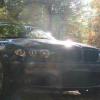General Chat / eddy currents, eddy current brake
-
 15-February 05
15-February 05
-

 Magnus
Offline
hello
Magnus
Offline
hello
i have to write a text for school on the topic you can read above. it has to be arround 12 pages long, which is not really the problem, cause most of it will be filled with physics.
but i could need some information on eddy current brakes used at coasters and freefall towers. mainly technical information.
i could also fill the 12 pages with a list of all coasters using eddy current brakes, but that wouldn't give my such a good mark.
i aim at 15 out of 15 points for phyics this year.
back to my text. i could also need some information on classic coaster brakes.
maybe someone of you coasterfreaks has some intersting links for me. all that goodle stuff is just weird and stupid. nothing i could really use for it. most explanations of eddy current brakes i found on the net are wrong or very undetailed.
thanks
magnus -

Corkscrewed Offline
I would write to coaster companies if you want technical specs.
Classical brakes are pneumatically applied, meaning a lever releases two pads which slide together, grip a brake fin as a coaster comes in. It works via friction, basically. -

 RCTyrant
Offline
Most "classic" brakes, like Corky stated, use air compression. These brakes are also fail-proof, which doesn't mean that they cannot break, it means that if they do happen to fail, they will do so safely. This is done by having a spring that holds the two fins together, when air flows, it pushes the spring open and lets the train coast through, when air is released, the spring goes back to its original position, and the fins are closed. Now in the event of a failure, the air would automatically be drained from the system (since it has to have a constant pressure) so the brakes would automatically move to a closed position. Hydralic brakes work in the same fashion, but are generally smoother and a lot easier to control than air pressure because a fluid is being used. With the air pressure systems, the brakes are normally only in two positions, "on" or "off" but with hydralic brakes, since a fluid is used, it allows for greater control, so parabola curves and stuff can be used to bring a train to a stop smoothly.
RCTyrant
Offline
Most "classic" brakes, like Corky stated, use air compression. These brakes are also fail-proof, which doesn't mean that they cannot break, it means that if they do happen to fail, they will do so safely. This is done by having a spring that holds the two fins together, when air flows, it pushes the spring open and lets the train coast through, when air is released, the spring goes back to its original position, and the fins are closed. Now in the event of a failure, the air would automatically be drained from the system (since it has to have a constant pressure) so the brakes would automatically move to a closed position. Hydralic brakes work in the same fashion, but are generally smoother and a lot easier to control than air pressure because a fluid is being used. With the air pressure systems, the brakes are normally only in two positions, "on" or "off" but with hydralic brakes, since a fluid is used, it allows for greater control, so parabola curves and stuff can be used to bring a train to a stop smoothly.
If you have anymore questions, feel free to ask, I did a summer internship with the corporate engineer of Six Flags St. Louis, and learned a hell of a lot about the technical sides of coasters and engineering, and is what I will be pursuing next year at the University of Missouri - Rolla. -

 Magnus
Offline
thanks for your posts guys.
Magnus
Offline
thanks for your posts guys.
i can really need everything that fits to my topic.
as it's eddy corrent brakes that mainly everything about coasterbrakes and freefall brakes.
i'd especially need sites with correct information. i can't really find books or site on the net, really discussing the technologie of coasters (especially brakes)
thanks for your help anyways, but if you still have some hints for me feel free to post here
-

 Ride6
Offline
Ride6
Offline
Actully 'classical' breaks are the old skid breaks. Basically nothing more than a piece of metal the sticks up enough to drag on the bottem of the train, thus slowing it. This system is held up by springs and is released (through a seris of pulleys) by a lever opperated by the ride attendent in the station.I would write to coaster companies if you want technical specs.
Classical brakes are pneumatically applied, meaning a lever releases two pads which slide together, grip a brake fin as a coaster comes in. It works via friction, basically.
This system is almost non-existant anymore...
ride6 -

Corkscrewed Offline
True. Given the content of his post, I figured he was just using "classical" as a substitute for "traditional."
Both types are grounded on friction, though, and that was my point anyway.
 Tags
Tags
- No Tags
